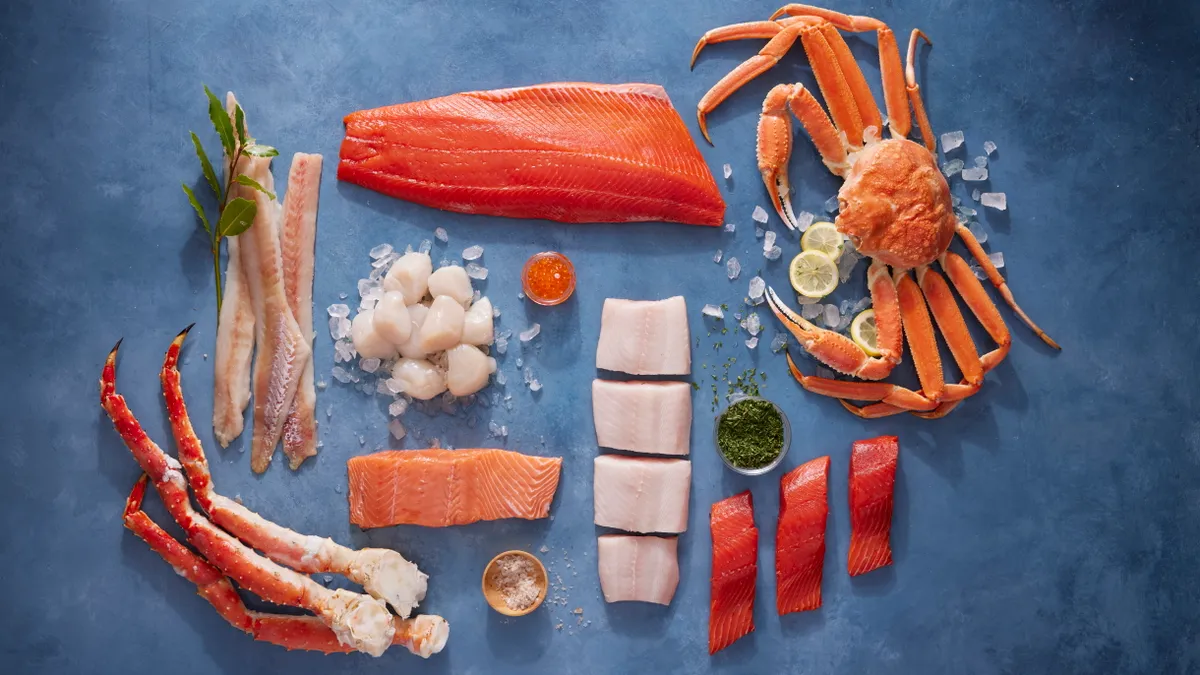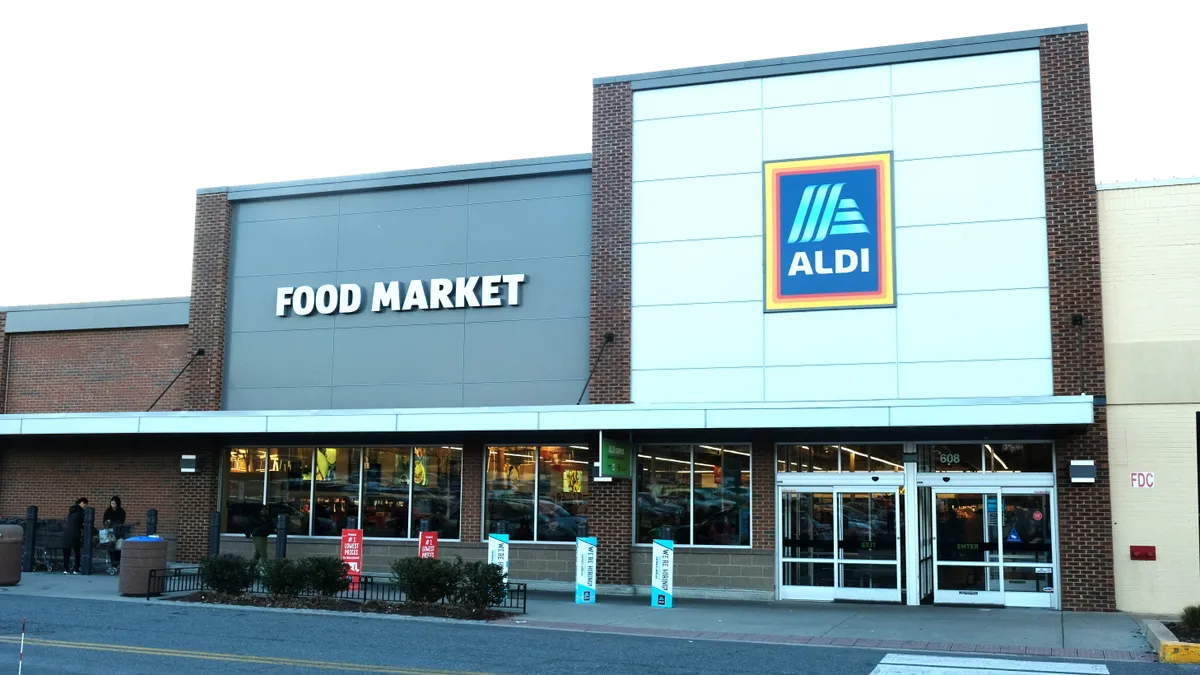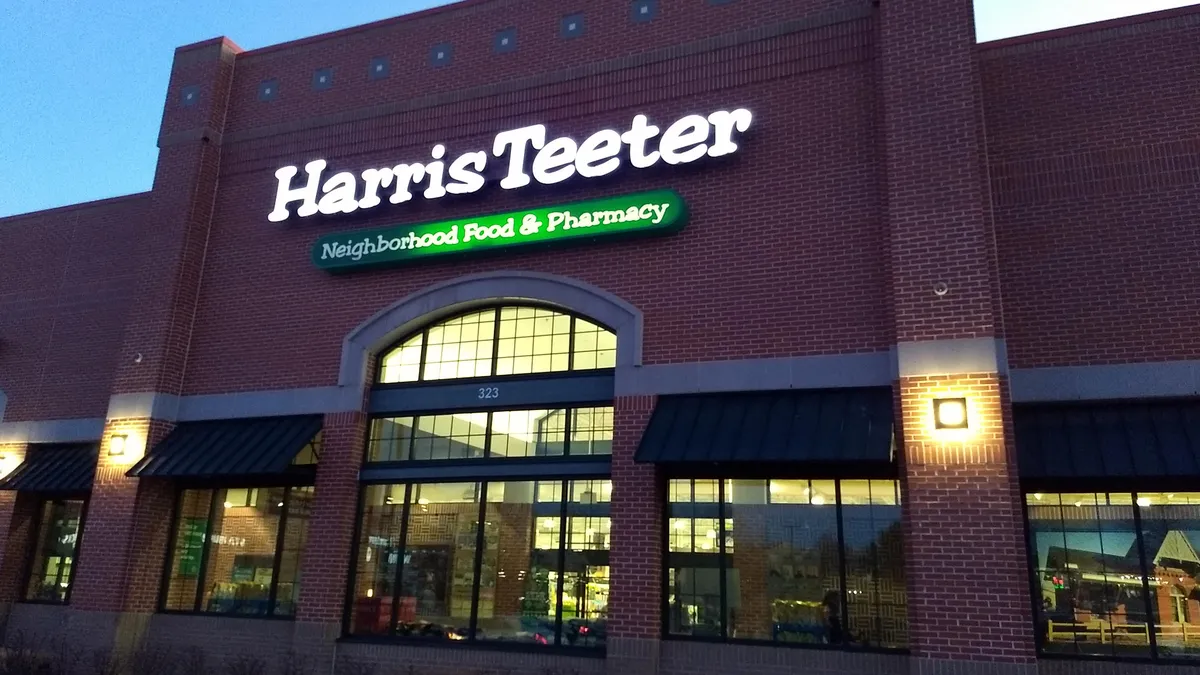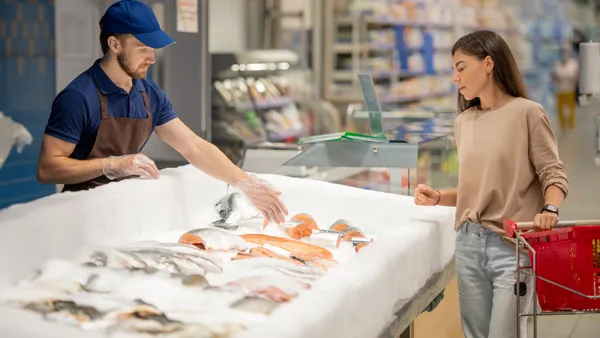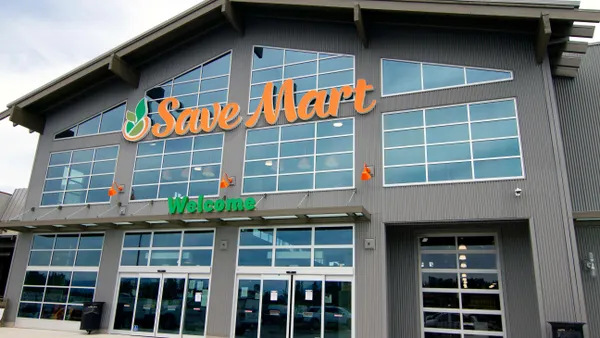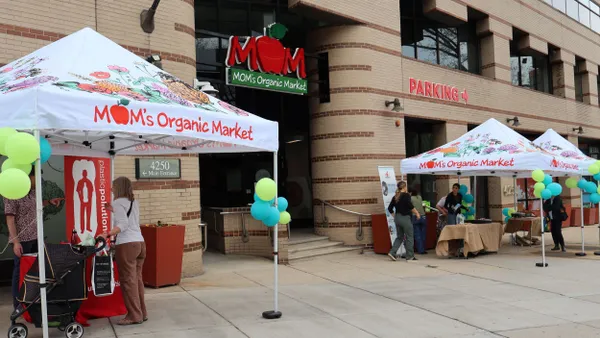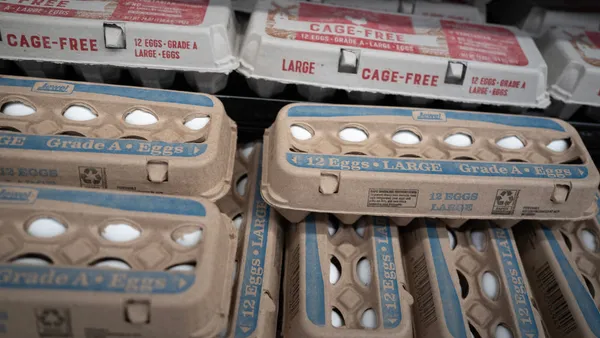As more and more consumers seek to eat more sustainably, retailers have an opportunity to promote the environmental benefits of wild-caught seafood. It requires less resources to produce than any other source of protein, and generates less waste, especially when purchased frozen.
According to a recent report from research and consulting firm LEK, more than half of U.S. consumers said they are willing to pay more for sustainably produced goods. And when it comes to food products, they are willing to pay a premium of 30% to 40%, on average.
Wild-caught seafood from Alaska provides a wide variety of sustainable options, ensuring that retailers and their customers always have plenty to choose from.
Seafood from Alaska includes:
• Five species of salmon — Sockeye, Pink, King, Coho and Keta
• Several varieties of whitefish, including Atka Mackerel, Herring, Cod, Surimi Seafood, Sole (Flounder), Halibut, Sablefish, Rockfish and Alaska Pollock
• Multiple varieties of shellfish, including Weathervane Scallop, Snow Crab, King Crab and Dungeness Crab.
In addition, for customers seeking cost savings during inflationary times, canned or pouched Alaska salmon can provide an economical option.
Alaska goes to great lengths to ensure the continued abundance of its wild seafood, which is one of its greatest resources. That’s why sustainability was written into its constitution when it became a state in 1959.
“From fishermen and processors to scientists and law enforcement officials, sustainability is not only crucial to our livelihood, but it’s a deeply ingrained tradition,” said Megan Rider, domestic marketing director, Alaska Seafood Marketing Institute.
The sustainability of frozen seafood
Freezing and temperature control maintains the quality of Alaska seafood throughout the supply chain and ensures that the fish retain their taste, texture and nutritional value.
“The sooner fish can be chilled and frozen, the more quality is preserved,” said Rider.
Alaska wild-caught fish are frozen quickly after capture at the peak of quality, she said, which ensures the fish has “the same quality it would have had if eaten on the dock with the fishermen at landing.”
Quality freezing helps:
• Prevent loss of quality from drip loss, lipid oxidation and microbial and enzyme activity.
• Promote sustainability by lengthening shelf life and minimizing waste.
• Keep prices stable by providing consistent supply.
• Make wild-caught seafood from Alaska available to consumers year-round.
“By carefully and meticulously maintaining quality control from catch to table, Alaska’s harvesters and processors ensure the highest quality seafood come from Alaska,” said Rider.
The Alaska seafood industry also works with retailers to help educate shoppers on the best and easiest ways to prepare frozen seafood, which is especially important now that more consumers are cooking at home. ASMI’s Cook it Frozen® campaign provides retailers with recipes, how-to videos and other materials to teach consumers how to prepare seafood directly from frozen, for delicious meals in a matter of minutes.
Certification and traceability
All Alaska seafood suppliers conform to USDA Country of Origin Labeling (COOL) requirements and the U.S. Seafood Import Monitoring Program (SIMP).
Seafood producers in Alaska also comply with the FDA’s Hazard Analysis and Critical Control Point (HACCP) plan, which requires meticulous recordkeeping to ensure that food safety requirements are met. It also documents the alteration of fish and shellfish into seafood products, and is a component of product traceability information.
Traceability is also an important part of sustainability certification programs such as Responsible Fishery Management (RFM). This wild-capture certification program has two standards – a fishery and chain-of-custody standard. Every organization that takes ownership of the certified seafood, from the point of first handling after the fish has been landed until it is processed into the final consumer product, needs to be certified for chain of custody, Rider said.
“This ensures a company’s traceability procedures are in compliance with the standard and fish can be traced back through every step in a supply line to the certified sustainable fishery,” she said.
Promoting Alaska seafood to customers
Certification and traceability also play a role in helping retailers promote seafood from Alaska to their customers.
“Identifying the source of your seafood as Alaska is an easy way to communicate to consumers that the seafood is wild, sustainably caught and of the highest quality,” said Rider.
“Alaska seafood has such a unique story because of the people who manage and catch the fish,” she said.
Alaskans have a deep passion and respect for the sea because thousands of families rely on it to make their living. Fishing and processing employs more than 60,000 people in Alaska, more people than any other industry in the state.
Alaska fishermen are truly responsible stewards, and they know they must sometimes put aside short-term gain for the long-term health of the resource, said Rider.
“They are committed to obeying strict laws, careful harvesting methods, accurate reporting and adhering to scientific data,” she said. “It’s how they protect the fish and their livelihood.”
Merchandising Alaska seafood shows that you are choosing to support responsibly harvested fisheries and fishing families in an American food system that is designed to support the health and resiliency of the entire marine ecosystem. Plus, it’s smart business. Rider cited research from Datassential showing that 72% of shoppers are more likely to buy seafood when they see the Alaska Seafood logo, and 73% are willing to pay more for seafood when they see the Alaska Seafood logo.
ASMI can help retailers promote wild seafood from Alaska with free POS materials that feature the wilds of Alaska, the fishermen and the pristine, natural environment where the fish are caught. In addition, ASMI has an extensive media library of photography and videos that grocers can use to create their own online and in-store promotional materials.
For more information, recipes, training materials and more, visit alaskaseafood.org/retail.

